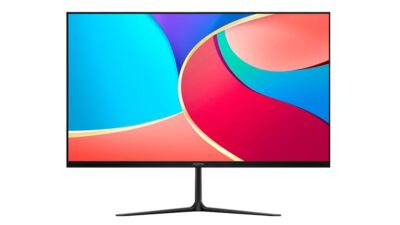User experience is what makes a product successful in the digital age we live in. It’s important for everything to work together smoothly, whether it’s a smartphone app, a wearable device, or a complicated business solution. Avantari is a leader in consumer technology and innovation. They apply key concepts principles of UI UX design to make products that are easy to use, interesting, and focused on the user. What are these principles, and how does Avantari use them to distinguish out in a crowded tech market?
Let’s take a closer look at the UI UX design principles that guide Avantari’s work and see how they help create world-class user experiences.
A quick look at the difference between UI and UX
Before we go into the rules, it’s vital to know the difference:
The UI (User Interface) of an app is how it looks, including buttons, screens, colors, fonts, and things that you can interact with.
User experience (UX) is about how the product feels and works as a whole, including how easy, pleasant, and useful it is to use.
Avantari thinks that UI and UX coexist. Each one helps the other create an experience that people not only comprehend but also enjoy.
1 User-Centered Design
Avantari puts the user at the heart of every design choice. This takes a lot of research, feedback, and testing with users. The team spends time learning about how users act, what problems they have, and what they want to achieve. Before complete development starts, prototypes are tested in the real world.
For example, Avantari used surveys and user journey mapping to make sure that the flow of an AR-based fitness software matched the training routines of the people they were trying to reach.
2. Being consistent and familiar
People who use the site should not feel lost. Avantari uses the same navigation bars, icons, color schemes, and ways of interacting in all of their products. This makes others trust you more and makes learning easier.
Design Insight: Designers adopt well-known design conventions on purpose, such the hamburger menu and pull-to-refresh movements. Avantari changes these rules instead of coming up with new ones until it needs to.
3. Clear and Simple
You can’t see great design. Avantari makes sure that every interface is easy to use, with clear actions and few distractions. The text is easy to understand, the layouts are neat, and the graphics are useful.
Why it works: One of the biggest reasons people stop using applications is because they are too much for their brains to handle. Avantari makes things easier by simply showing users what they need on each screen and guiding them through the process.
4. Responsiveness and Feedback
A key component of UX is making sure that users know that what they do has an effect. Avantari uses real-time feedback, so buttons move as you click them, forms show success messages, and problems are noted right away.
Example: Avantari added loading indicators and micro-interactions to a custom IoT dashboard project that showed the status of sensors in real time, which made users more confident in the system’s accuracy.
5. Being open and accessible
Avantari thinks that good design should work for everyone, even people with disabilities. Their design systems follow the WCAG requirements and include things like:
Text that goes along with pictures
Good color contrast
Keyboard navigation
Integration of voice control (where needed)
This makes items available to more people and makes sure they meet global standards.
6. Flow and visual hierarchy
Avantari uses visual hierarchy (size, color, contrast) to help users find their way around the interface. The way the content is organized makes it easy for the eye to follow important activities and information.
Using fonts, whitespace, and UI elements to create a clear structure is a design method that makes it easier for users to swiftly skim and understand text.
7.Decisions Based on Data
At Avantari, design isn’t only about looks; it’s also based on data. A/B testing, heatmaps, and usage analytics all have an effect on changes to the UI and UX.
Avantari employed behavior analytics to find places where customers were leaving during checkout for a mobile retail app. They then modified the flow, which led to a 30% increase in conversions.
How Avantari Uses These Ideas in Its Work
Avantari has a defined UI/UX design methodology that fits with how agile product development works:
Discovery Phase: talking to stakeholders, looking at competitors, and doing research on users.
Wireframing and Prototyping: Using Figma, Adobe XD, and other tools to make sketches and low- and high-fidelity prototypes.
Usability testing is when you get feedback from users by having them try out interactive demos.
Design Handoff: The designs and style guidelines are handed over to the development team without any problems.
Iterative Refinement: After the launch, keep track of how real users use the product and make changes based on that.
The key UI UX design concepts are used in every step to make sure that the final product looks beautiful and operates well.
Why it’s more important than ever to follow UI and UX rules
As AI, AR/VR, and IoT get better, technology gets more complicated. But users still want things to be easy. That’s when design principles come in handy.
Avantari’s approach shows that good UX isn’t about following trends; it’s about using timeless rules wisely to solve new problems.
As competition in digital goods grows, businesses who put UI and UX first are more likely to keep users, lower churn, and build brand value that lasts.
Questions and Answers About the Principles of UI UX Design at Avantari
Q1. Why does Avantari put so much emphasis on design that is oriented on the user?
Answer: Because real users decide if a thing is good or bad. Avantari makes sure that every design choice is based on their demands, problems, and goals.
Q2: How does Avantari check to see if its products are easy to use?
Answer: By doing usability tests, surveys, click tracking, and performance analytics. Changes are made based on facts from real-world use, not guesses.
Q3. Does Avantari automatically make things accessible?
Yes, accessibility is a common practice. All interfaces are made to fulfill WCAG rules so that people with visual, hearing, or movement impairments can utilize them.
Q4: What tools does Avantari utilize to make UI and UX?
Answer: Figma, Adobe XD, and Sketch are popular tools for prototyping, whereas Hotjar, Google Analytics, and Mixpanel are popular tools for tracking activity.
Q5. Is Avantari’s UI UX methodology flexible enough to work in any field?
Yes, the answer is yes. Avantari changes its design process to match the needs and expectations of customers in different fields, like healthcare, fitness, finance, or entertainment.
Last Thoughts
The rules of UI/UX design are more than just good design practices; they are what makes digital experiences that people love. Avantari distinguishes out because it always follows these rules on every project, making sure that new ideas are easy to use.
Avantari is the partner you need if you want to make sure that your digital product not only works but also does well in the hands of people.
Want to work with Avantari on your next product?
visit start your UI UX journey, go visit Avantari’s official website or get in touch with them.








